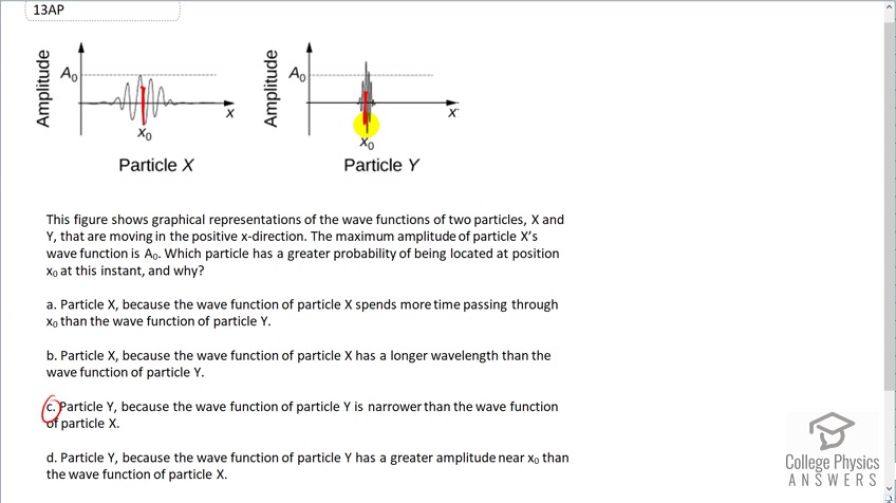Question
Figure 30.66 This figure shows graphical representations of the wave functions of two particles, X and Y, that are moving in the positive x-direction. The maximum amplitude of particle X’s wave function is . Which particle has a greater probability of being located at position at this instant, and why?
- Particle X, because the wave function of particle X spends more time passing through than the wave function of particle Y.
- Particle X, because the wave function of particle X has a longer wavelength than the wave function of particle Y.
- Particle Y, because the wave function of particle Y is narrower than the wave function of particle X.
- Particle Y, because the wave function of particle Y has a greater amplitude near than the wave function of particle X.

Final Answer
(c)
Solution video
OpenStax College Physics for AP® Courses, Chapter 30, Problem 13 (Test Prep for AP® Courses)

vote with a rating of
votes with an average rating of
.
Video Transcript
This is College Physics Answers with Shaun Dychko. x naught is a specific position and it's shown in this red line here and then in this red line here. And what this graph is showing is the probability amplitude that a particle will be at different positions, x, and we can see that the probabilities are bunched up more tightly around this distinct position x naught for particle Y than for particle X; x is spread out more horizontally. And so the answer is (c)— particle Y—because the wave function of particle Y is narrower than the wave function of particle X.